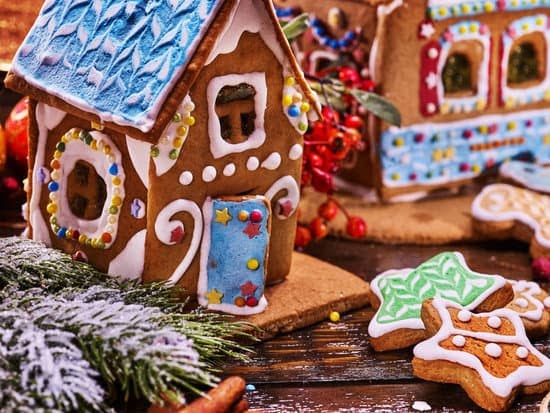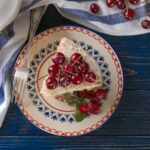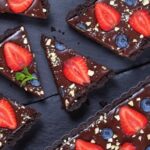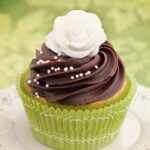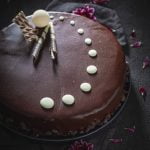When it comes to weddings, the cake is often the centerpiece of the entire celebration. It’s not just about the taste, but also about the visual appeal that can leave a lasting impression on your guests. A well-decorated buttercream wedding cake can truly transform the ambiance and elevate the entire event. It is a reflection of the couple’s style, personality, and love story.
The art of decorating a buttercream wedding cake requires skill, patience, and attention to detail. From achieving a smooth and even coating, to adding texture and patterns through piping techniques, every step contributes to creating a stunning masterpiece that will be admired by all. It is essential to have an understanding of key materials and tools needed for cake decoration, as well as tips for prepping both the buttercream and cake layers.
As you embark on this journey of creating a remarkable buttercream wedding cake, this article will guide you through each step with detailed instructions and invaluable tips. Whether you are an experienced baker or just starting out, there is something here for everyone looking to create an unforgettable dessert for their special day. So let us dive into the world of buttercream decoration and discover how it can make your wedding cake truly extraordinary.
Understanding the Basics
To successfully decorate a buttercream wedding cake, it is important to have the right materials and tools on hand. This section will outline the key items you will need to create a beautifully decorated cake that will leave a lasting impression on your guests.
Buttercream Frosting
The first and most essential ingredient for decorating a buttercream wedding cake is, of course, the buttercream frosting itself. You can either make your own using a recipe of your choice or purchase pre-made buttercream from a store. When choosing or making your buttercream frosting, ensure that it has a smooth and creamy consistency that is easy to work with.
Piping Bags and Tips
Piping bags are an indispensable tool for decorating cakes with buttercream. These bags come in different sizes and materials, such as disposable plastic or reusable fabric. It is recommended to have several piping bags on hand, especially if you plan to use different colors or types of frosting simultaneously. Alongside piping bags, having various tips will allow you to create different patterns and textures on your cake.
Offset Spatulas and Bench Scraper
Offset spatulas are great for spreading and smoothing buttercream frosting onto the surface of the cake. Choose offset spatulas with different lengths to ensure you have more control when working on different areas of the cake. A bench scraper is another invaluable tool for achieving smooth and even coatings of buttercream. This tool helps clean up any excess or uneven frosting on the sides of the cake while giving it a clean finish.
Cake Turntable
A cake turntable elevates convenience during the decorating process by providing stability and allowing easy access to all areas of the cake. With a turntable, you can easily rotate the cake as you work, making it easier to apply an even coat of buttercream without having to constantly adjust its position.
Other Essential Tools
In addition to the above, there are a few other tools that will come in handy when decorating a buttercream wedding cake. These include a cake leveler for creating evenly sized layers, a cake smoother for achieving a polished finish, an offset spatula with a straight edge for precise detailing, and a palette knife for sculpting or blending different colors of frosting.
By having these key materials and tools ready to go, you will be well-equipped to begin your journey of creating a beautifully decorated buttercream wedding cake that will surely impress both the couple and their guests.
Preparation
Before diving into the process of decorating a buttercream wedding cake, it is crucial to make sure that you have properly prepared both the buttercream and cake layers. Taking the time to prep these elements will help ensure a smooth and seamless decorating process, resulting in a stunning final product. Here are some essential tips for prepping the buttercream and cake layers before decorating:
Gather Your Tools and Ingredients
Before getting started, gather all the necessary tools and ingredients for your buttercream and cake layers. This includes measuring cups, mixing bowls, an electric mixer or stand mixer, a spatula or offset spatula, a cake turntable, a piping bag with tips, and any other specific tools required for your chosen design.
Prepare the Buttercream
To achieve the best results when decorating a buttercream wedding cake, it is important to properly prepare your buttercream. Start by ensuring that your ingredients are at room temperature so they incorporate smoothly. Then, using an electric mixer or stand mixer fitted with a paddle attachment, beat softened unsalted butter until light and fluffy.
Gradually add powdered sugar while continuing to mix until fully combined. This basic buttercream recipe can be adjusted with flavorings such as vanilla extract or cocoa powder based on personal preference.
Level and Fill Your Cake Layers
Before decorating your cake layers with buttercream, it is essential to level them. Using a serrated knife or cake leveler, trim off any domed tops to create even layers. Once leveled, you can proceed with filling each layer with your desired filling such as raspberry jam or chocolate ganache. Spread an even layer of filling onto each layer before stacking them together.
Taking the time to properly prep your buttercream and cake layers will set you up for success when it comes to decorating your wedding cake. By gathering all necessary tools and ingredients beforehand, preparing the buttercream, and leveling and filling your cake layers, you will have a solid foundation to create a beautifully decorated masterpiece.
Mastering Buttercream Techniques
Achieving a smooth and even coating of buttercream on a wedding cake is essential for creating a polished and professional look. It sets the foundation for the rest of the cake decoration. While it may seem challenging, with the right techniques and practice, anyone can master this skill. In this section, we will provide you with a step-by-step guide to help you achieve that perfect smooth buttercream finish.
Preparing the Buttercream:
Before applying the buttercream onto your cake, ensure that it is at the right consistency. If it is too stiff, it will be difficult to spread smoothly, and if it is too soft, it may cause your decorations to collapse. To achieve the ideal consistency, make sure your butter is soft but not melted before you begin creaming it with powdered sugar.
Applying a Crumb Coat:
To start off, apply a thin layer of buttercream all over the cake called a crumb coat. This layer seals in any loose crumbs and provides a smooth base for the final coating. Use an offset spatula or bench scraper to apply an even layer of buttercream on the top and sides of your cake. Don’t worry if crumbs mix into this layer; they will be hidden by the final coating.
Smoothing Out Imperfections:
Once your crumb coat has set (this usually takes about 30 minutes), you can proceed with applying the final coating of buttercream. Start by adding more buttercream on top of your crumb coat using an offset spatula or piping bag fitted with a large round tip. Spread an even layer of buttercream across the top surface of the cake first before moving on to the sides.
To achieve that perfectly smooth finish, hold an offset spatula perpendicular to the side of your cake and rotate it while applying gentle pressure outward. This motion helps to smooth out any imperfections and creates a seamless look. Continue this process until the entire cake is covered with an even layer of buttercream.
For extra precision, you can use a bench scraper to further smooth out the sides and create clean edges. Hold the scraper against the side of the cake while rotating it, ensuring that it is touching the cake at all times. This will help achieve a straight, smooth finish.
By following these step-by-step instructions, you can master buttercream techniques for achieving a smooth and even coating on your wedding cake. Remember that practice makes perfect, so don’t be discouraged if your first attempt isn’t flawless. With time and patience, you’ll be able to create beautifully decorated cakes that are sure to impress on your special day.
Adding Depth and Dimension
Decorating a buttercream wedding cake is not just about creating a smooth and even coating, but also about adding depth and dimension to the design. Utilizing different piping techniques can help create texture and patterns that will elevate the overall look of the cake. In this section, we will explore some popular piping techniques that you can use to add depth and dimension to your buttercream wedding cake.
Ruffles: Ruffles are a classic piping technique that adds a delicate and romantic touch to any cake. To achieve this effect, use a petal tip and pipe small waves or ruffles onto the cake in a continuous motion. Start from the bottom of the cake and work your way up, slightly overlapping each layer to create an elegant cascading effect.
Stars: Stars are another versatile piping technique that can be used to create various patterns on the cake. You can achieve different effects by using different tips such as open star or closed star tips. Pipe stars in a tight cluster for a textured look, or space them out for a more scattered pattern.
Basketweave: The basketweave technique creates an intricate woven pattern that resembles a basket. To achieve this effect, use a basketweave tip with both smooth and jagged edges. Pipe horizontal lines across the cake, then pipe vertical lines over them, alternating between smooth and jagged edges. This technique requires some practice, but it can add an elegant and unique touch to your buttercream wedding cake.
In addition to these techniques, you can also experiment with other piping designs such as leaves, shells, beads, or rope borders to further enhance the texture and dimension of your buttercream wedding cake. Remember to practice these techniques before attempting them on your actual cake to ensure precision and consistency in your design. Adding depth and dimension through piping will transform your buttercream wedding cake into a stunning centerpiece that will impress your guests on your special day.
Elevating the Design
One way to take the design of a buttercream wedding cake to the next level is by incorporating fondant accents and decorations. Fondant is a versatile and pliable icing that can be rolled out and used to create decorative elements such as flowers, ribbons, and intricate designs. By adding these fondant accents to your buttercream cake, you can enhance its overall appearance and add a touch of elegance and sophistication.
To incorporate fondant into your buttercream cake design, you will need a few key tools and materials. First, you will need a rolling pin to roll out the fondant to an even thickness. A smooth work surface such as a silicone mat or parchment paper will also be helpful in preventing the fondant from sticking.
Additionally, you will need various fondant cutters in different shapes and sizes to create your desired decorations. These can include flower cutters, leaf cutters, and even alphabet or number cutters for personalized messages.
To begin, make sure that your buttercream cake has been properly chilled so that it is firm enough to support the weight of the fondant decorations. Roll out the fondant evenly using a rolling pin until it reaches your desired thickness. Carefully lift the rolled-out fondant over the cake and gently place it on top, smoothing down any air bubbles or wrinkles with your hands.
Once the fondant is in place on the cake, you can start adding additional decorations. Use various fondant cutters to create flowers or other shapes, then attach them to the cake using a small amount of water or edible glue. You can also use tools such as impression mats or embossing sticks to add texture or patterns directly onto the fondant surface.
Incorporating fondant accents and decorations into your buttercream wedding cake design allows for endless possibilities when it comes to creativity and customization. Whether you choose simple floral embellishments or elaborate sculpted figures, adding fondant elements will elevate the design and make your cake truly stand out on the big day.
Exploring Color and Flair
Choosing the right colors for your buttercream wedding cake is an important step in creating a visually stunning masterpiece. The colors you choose should complement your wedding theme and help enhance the overall design. Here are some tips to guide you in selecting the perfect buttercream colors:
- Consider Your Wedding Theme: Start by thinking about the overall color palette of your wedding. If you have a specific theme, such as rustic, boho, or vintage, take that into account when choosing your buttercream colors. You can opt for a traditional white cake with accents in your chosen theme colors or go bold with vibrant hues that reflect your personality.
- Take Inspiration from Nature: Look to nature for inspiration when choosing buttercream colors. Soft pastels are often popular choices for weddings, as they convey a sense of romance and elegance. You can also consider incorporating seasonal elements like fresh flowers or fruits into the cake design to add natural pops of color.
- Coordinate with Your Wedding Decor: It’s important to ensure that your cake complements the overall decor of your wedding venue. Take into consideration the color scheme of your decorations, including table linens, flowers, and centerpieces. This will help create a cohesive look throughout your reception space.
Once you have decided on the perfect buttercream colors for your wedding cake, it’s time to think about edible decorations that can further enhance its appearance. Edible decorations can include sugar flowers, piped designs, edible pearls or sequins, and even metallic accents. Here are some options to consider:
- Sugar Flowers: Sugar flowers are a classic choice for wedding cakes and can be made in any color imaginable. They provide an elegant touch and can be customized to match your wedding bouquet or floral arrangements.
- 2.Piped Designs: Piping techniques can be used to create intricate patterns, lace-like designs, or even personalized messages on your cake. You can choose to pipe directly onto the buttercream or create delicate decorations that can be attached to the cake.
- Edible Pearls and Sequins: Adding edible pearls or sequins to your cake can create a glamorous and sophisticated look. These small accents can be strategically placed throughout the design to add texture and shine.
By carefully selecting the right buttercream colors and edible decorations for your wedding theme, you can create a visually stunning cake that will be remembered by your guests long after the last slice has been enjoyed.
<.DOCTYPE html>
| Choosing Buttercream Colors: | Choosing Edible Decorations: |
|---|---|
| 1. Consider Your Wedding Theme | 1. Sugar Flowers |
| 2. Take Inspiration from Nature | 2.Piped Designs |
| 3. Coordinate with Your Wedding Decor | 3. Edible Pearls and Sequins |
Personal Touches
When it comes to a wedding cake, customization is key. Every couple wants their cake to reflect their unique style and personality. Adding personal touches to a buttercream wedding cake can truly make it stand out and become a memorable centerpiece of the reception. Here are some creative ideas for customizing the buttercream wedding cake to reflect the couple’s style.
Monogram or Initials
One popular way to add a personal touch to a buttercream wedding cake is by incorporating the couple’s monogram or initials into the design. This can be done using fondant letters placed on top of the cake or even piped with colored buttercream icing directly onto the cake. The monogram or initials could represent the couple’s last name or their first names combined, depending on their preference.
Symbolic Elements
Another creative idea is to include symbolic elements that hold meaning for the couple. For example, if they have a shared hobby or interest, such as traveling, music, or sports, these elements can be represented on the cake using edible decorations. This adds a personal touch and tells a story about who they are as a couple.
Handcrafted Cake Toppers
A unique and charming way to customize a buttercream wedding cake is by incorporating handcrafted cake toppers. These can be made from various materials such as clay, wood, or even paper craft. Custom-made cake toppers can be designed to resemble the couple themselves in miniature form, complete with matching outfits and hairstyles. Alternatively, they could also represent something meaningful to them like their pets or favorite hobbies.
Adding personal touches to a buttercream wedding cake not only makes it visually stunning but also adds sentimental value that will be cherished by the couple and their guests. The possibilities for customization are endless, limited only by imagination and creativity. By incorporating monograms or initials, symbolic elements, and handcrafted cake toppers, the couple can truly make their buttercream wedding cake a reflection of their unique love story.
Troubleshooting
Decorating a buttercream wedding cake can be a rewarding and creative process, but it’s not always without its challenges. In this section, we will explore some common buttercream decorating challenges and provide tips on how to overcome them.
One common challenge when working with buttercream is achieving a smooth and even coating on the cake. Sometimes, air bubbles or visible streaks can appear in the icing, creating an uneven texture. To overcome this, it’s important to properly prepare the buttercream before applying it to the cake.
Make sure your butter is at room temperature and soft enough to cream smoothly with the other ingredients. If your buttercream becomes too warm or starts to melt while you’re working with it, you can place it in the refrigerator for a few minutes to firm up.
Another challenge that may arise is piping delicate designs or intricate patterns on the cake. This requires a steady hand and good control of the piping bag. One way to overcome this challenge is by practicing your piping techniques beforehand on parchment paper or a cake dummy. This will help you gain confidence and precision in your movements before applying them to the actual cake.
Additionally, if you encounter issues such as lumpy or curdled buttercream, there are ways to salvage it. A common mistake is adding too much liquid or overmixing the ingredients, which can cause separation and curdling. If this happens, try adding small amounts of powdered sugar or more butter until you achieve a smoother consistency. Alternatively, if your buttercream becomes too thick or stiff, adding a few drops of milk or water at a time can help loosen it up.
| Challenge | Tip |
|---|---|
| Air bubbles or streaks in icing | Properly prepare the buttercream; smooth out with an offset spatula or bench scraper |
| Difficulty piping intricate designs | Practice piping techniques on parchment paper or a cake dummy beforehand |
| Lumpy or curdled buttercream | Add small amounts of powdered sugar or additional butter to achieve a smoother consistency |
| Stiff buttercream | Add a few drops of milk or water at a time to loosen it up |
By being prepared and having some key troubleshooting tips in your arsenal, you’ll be better equipped to handle any challenges that may arise when decorating your buttercream wedding cake. With practice and perseverance, you can achieve the beautiful result you envision for your big day.
Final Touches
Assembling, transporting, and storing a buttercream wedding cake requires careful attention to detail to ensure that the cake arrives at its destination intact and in perfect condition. These final touches are crucial in order to maintain the beautiful design and taste of the cake until it is ready to be served at the wedding. Here are some important tips to follow:
- Assembling the Cake: Once all the individual layers of the cake have been decorated, it is time to assemble them into a complete tiered wedding cake. It is important to have a sturdy base such as a cake board or plate for each tier.
Use dowels or straws inserted into the lower tiers to support the upper tiers and prevent them from sinking into the bottom layer. Carefully stack each layer on top of one another, ensuring that they are centered and level. - Transporting the Cake: Transporting a fully assembled buttercream wedding cake can be challenging, but with proper precautions, it can be done successfully. The key is stability and protection. Place non-slip mats or towels on a flat surface in your vehicle to prevent sliding during transportation.
Use a sturdy box or carrier specifically designed for transporting cakes, ensuring that it fits securely around each tier of the cake. To prevent movement within the box, add more supports such as foam inserts or non-slip liners. - Storing the Cake: If you need to store the buttercream wedding cake before serving, it is important to do so properly to maintain freshness and prevent any damage. Store the cake in a cool, dry place out of direct sunlight, as heat and humidity can cause melting or softening of the buttercream frosting. If possible, store the cake in a refrigerator set at a stable temperature between 36-40 degrees Fahrenheit (2-4 degrees Celsius).
However, if your refrigerator has strong odors like onions or garlic, it’s recommended not refrigerating due risk flavour transmission. It is important to note that refrigeration can cause condensation on the cake, so it should be covered with a cardboard box or cake dome to protect it.
| Tips for Assembling, Transporting, and Storing a Buttercream Wedding Cake |
|---|
| 1. Assemble the cake using sturdy bases and supports. |
| 2. Use a box or carrier designed for transporting cakes and secure each tier. |
| 3. Store the cake in a cool, dry place or refrigerate between 36-40 degrees Fahrenheit (2-4 degrees Celsius). |
Conclusion
In conclusion, decorating a buttercream wedding cake is not only a skill but also an art form that can greatly enhance the overall aesthetic of the cake.
By understanding the basics of materials and tools needed, preparing the buttercream and cake layers properly, mastering various techniques for achieving a smooth coating and adding texture, incorporating fondant accents, exploring color options, customizing the design, troubleshooting common challenges, and taking care in assembling, transporting, and storing the cake, one can ensure beautiful results on their special day.
The artistry involved in decorating a buttercream wedding cake should not be underestimated. From simple elegance to elaborate designs, each cake reflects the unique style and personality of the couple. The choice of colors and decorative elements can tie into the wedding theme or showcase personal touches that hold sentimental value. With the right techniques and attention to detail, a well-decorated buttercream wedding cake becomes a centerpiece that will leave a lasting impression on guests.
Ultimately, there is no limit to the creativity that can be expressed through a buttercream wedding cake. Not only does it act as a sweet indulgence for guests to savor, but it serves as an artistic representation of love and celebration.
So whether you choose to keep it simple or go all out with intricate designs and decorations, take pride in every step of the process. Celebrate your own artistry as you create a beautiful masterpiece that will be remembered fondly for years to come.
Frequently Asked Questions
How do you decorate a cake with buttercream for beginners?
Decorating a cake with buttercream for beginners can be a fun and rewarding experience. To start, it’s important to have a well-crimbed cake that is chilled in the refrigerator for easy handling. Using a spatula or piping bag, begin by applying a thin layer of buttercream on the sides and top of the cake to create a smooth base.
Then, you can get creative with different piping techniques such as rosettes, swirls, or borders to add texture and design elements. Adding different food coloring to your buttercream can also create vibrant and eye-catching decorations. Remember to take your time, practice the techniques, and don’t be afraid to experiment and have fun with it.
Is buttercream cake good for wedding?
Buttercream cake can absolutely be good for weddings! Many couples choose buttercream cakes for their weddings because of its versatility and delicious taste. Buttercream is smooth, creamy, and perfect for creating beautiful designs that match any wedding theme or style.
Whether you want a classic white wedding cake or something more unique and personalized, buttercream offers endless possibilities for decoration. It can also be easily flavored with extracts like vanilla or almond to enhance the overall taste of the cake. Ultimately, choosing whether to have a buttercream cake for a wedding comes down to personal preference and what fits best with the couple’s vision.
What kind of buttercream is used on wedding cakes?
The type of buttercream commonly used on wedding cakes is Swiss meringue buttercream (SMB) or Italian meringue buttercream (IMB). These types of buttercreams are preferred for their stability, silky texture, and ability to hold intricate designs without melting or losing shape. Swiss meringue buttercream is made by whisking egg whites with granulated sugar over a double boiler until heated through before adding softened unsalted butter gradually while continuing to whip until light and fluffy.
Italian meringue buttercream involves pouring hot sugar syrup into whipped egg whites before slowly incorporating softened unsalted butter. Both types result in a smooth and luxurious buttercream that is perfect for wedding cake decorations. The choice between the two often comes down to personal preference and the specific technique preferred by the baker.

Welcome to our cake decorating blog! My name is Destiny Flores, and I am the proud owner of a cake decorating business named Cake Karma. Our mission is to provide delicious, beautiful cakes for all occasions. We specialize in creating custom cakes that are tailored specifically to each customer’s individual needs and tastes.

